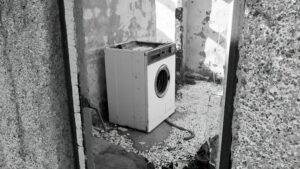Bake and broil elements are essential components of an oven that play a crucial role in cooking. The bake element is responsible for providing heat from the bottom of the oven, while the broil element provides heat from the top. These elements work together to create the desired cooking environment for various dishes. In this blog post, we will explore the function of bake and broil elements, common problems that can occur, signs of a faulty element, and provide a step-by-step guide to diagnosing and repairing these elements.
Key Takeaways
- Bake or broil elements are essential components of an oven that generate heat for cooking.
- Understanding the function of elements in ovens is crucial for diagnosing and repairing common problems.
- Common problems with bake or broil elements include uneven heating, no heating, or burnt-out elements.
- Signs of a faulty element in your oven include visible damage, inconsistent heating, or a lack of heat altogether.
- Tools and equipment needed for element diagnosis include a multimeter, screwdriver, and replacement elements.
Understanding the Function of Elements in Ovens
Bake and broil elements work by converting electrical energy into heat energy. The bake element is typically located at the bottom of the oven and is responsible for heating the oven cavity. It is a long, metal coil that glows red when it is turned on. The broil element, on the other hand, is located at the top of the oven and is used for cooking food quickly at high temperatures.
The main difference between bake and broil elements is the way they distribute heat. The bake element provides consistent heat from the bottom, which is ideal for baking and roasting. The broil element, on the other hand, provides intense heat from the top, which is perfect for browning and crisping dishes.
Proper functioning of these elements is crucial for achieving optimal cooking results. If either element is not working correctly, it can lead to uneven cooking, inconsistent temperatures, or no heat at all.
Common Problems with Bake or Broil Elements
There are several common problems that can occur with bake or broil elements in ovens. One of the most common issues is a burnt-out element. Over time, these elements can wear out and stop working altogether. Another problem that can occur is loose or broken connections. If the connections between the element and the wiring are not secure, it can cause the element to malfunction. Additionally, corrosion or damage to the element itself can also lead to problems.
Signs of a Faulty Element in Your Oven
There are several signs that indicate a faulty bake or broil element in your oven. One of the most noticeable signs is uneven cooking. If you notice that your food is not cooking evenly, with some parts being overcooked while others are undercooked, it could be a sign that one of the elements is not functioning properly. Another sign is inconsistent temperature. If you set your oven to a specific temperature but find that it is not reaching or maintaining that temperature, it could be due to a faulty element.
Another sign of a faulty element is no heat or low heat. If you turn on your oven and it does not heat up at all, or if it takes an unusually long time to reach the desired temperature, it could be a sign that one of the elements is not working. Lastly, if you notice any burning or smoking coming from the oven when it is turned on, it is important to turn off the oven immediately and have it inspected by a professional.
Tools and Equipment Needed for Element Diagnosis
To diagnose and repair bake or broil elements in your oven, you will need a few tools and equipment. The most important tool is a multimeter, which is used to test the continuity of the elements. You will also need a screwdriver to remove the element from the oven, pliers to check for loose connections, and replacement elements if necessary.
Step-by-Step Guide to Diagnosing Bake or Broil Elements

1. Turn off power to the oven: Before working on any electrical components of your oven, it is crucial to turn off the power at the circuit breaker.
2. Remove the element: Use a screwdriver to remove the screws holding the element in place. Carefully pull out the element from the oven.
3. Test the element with a multimeter: Set your multimeter to the continuity setting and touch the probes to the terminals of the element. If the multimeter beeps or shows a reading of zero, it means that the element is functioning properly. If there is no beep or reading, it indicates a faulty element.
4. Check for loose or broken connections: Inspect the connections between the element and the wiring. Use pliers to tighten any loose connections or replace any broken wires.
5. Replace the element if necessary: If the element is burnt out or damaged, it will need to be replaced. Purchase a replacement element that is compatible with your oven model and follow the manufacturer’s instructions for installation.
Tips for Repairing or Replacing Faulty Elements
When repairing or replacing faulty bake or broil elements, there are a few tips to keep in mind. First, make sure to purchase the correct replacement element for your oven model. Consult your oven’s manual or contact the manufacturer for guidance if needed. Secondly, always follow the manufacturer’s instructions for installation to ensure proper and safe installation. Lastly, test the new element before using the oven to ensure that it is functioning correctly.
Precautions to Take When Working with Oven Elements
When working with bake or broil elements in your oven, it is important to take certain precautions to ensure your safety. Always turn off power to the oven at the circuit breaker before working on any electrical components. Additionally, wear protective gear such as gloves and safety glasses to protect yourself from any potential hazards. Lastly, use caution when handling hot elements, as they can cause burns.
Troubleshooting Other Oven Issues Related to Elements
While bake and broil elements are often the culprits of oven problems, there are other issues that can arise as well. Blown fuses or tripped breakers can cause the oven to lose power. If this happens, check the circuit breaker or fuse box and reset or replace as necessary. A faulty thermostat can also cause temperature inconsistencies in the oven. If you suspect a faulty thermostat, it is best to consult a professional for repair or replacement. Lastly, wiring issues can also cause problems with the oven’s elements. If you suspect a wiring issue, it is best to seek professional help for diagnosis and repair.
Maintenance Tips to Prevent Element Failure in Ovens
To prevent element failure in your oven, regular maintenance is key. Regularly clean the oven, including the elements, to remove any built-up grease or food debris. Avoid spills and drips on the elements by using baking sheets or foil to catch any drips while cooking. Additionally, check the connections and wiring regularly to ensure they are secure and free from damage.
In conclusion, bake and broil elements are essential components of an oven that play a crucial role in cooking. Understanding how these elements work, common problems that can occur, and signs of a faulty element is important for maintaining a properly functioning oven. By following the step-by-step guide to diagnosing and repairing bake or broil elements, as well as taking necessary precautions and performing regular maintenance, you can ensure that your oven continues to provide optimal cooking results. If you are unsure or uncomfortable with diagnosing or repairing oven elements, it is always best to seek professional help to avoid any potential hazards or further damage to your oven.
If you’re interested in learning more about appliance warranties and how they can protect your investment, check out this informative article on 911 Appliance’s website. It provides valuable insights into the importance of warranties and what they cover. Understanding your warranty can help you make informed decisions when it comes to diagnosing and repairing elements in your appliances. Don’t miss out on this helpful resource! Read more
What Are the Common Causes of Element Failure in Kitchen Appliances?
The common causes of element failure in kitchen appliances can range from overheating to general wear and tear. One of the most frequent issues is a burner control breakdown, leading to malfunctions in stovetops and ovens. Seeking professional repair services is often the best solution for burner control breakdown solutions.



